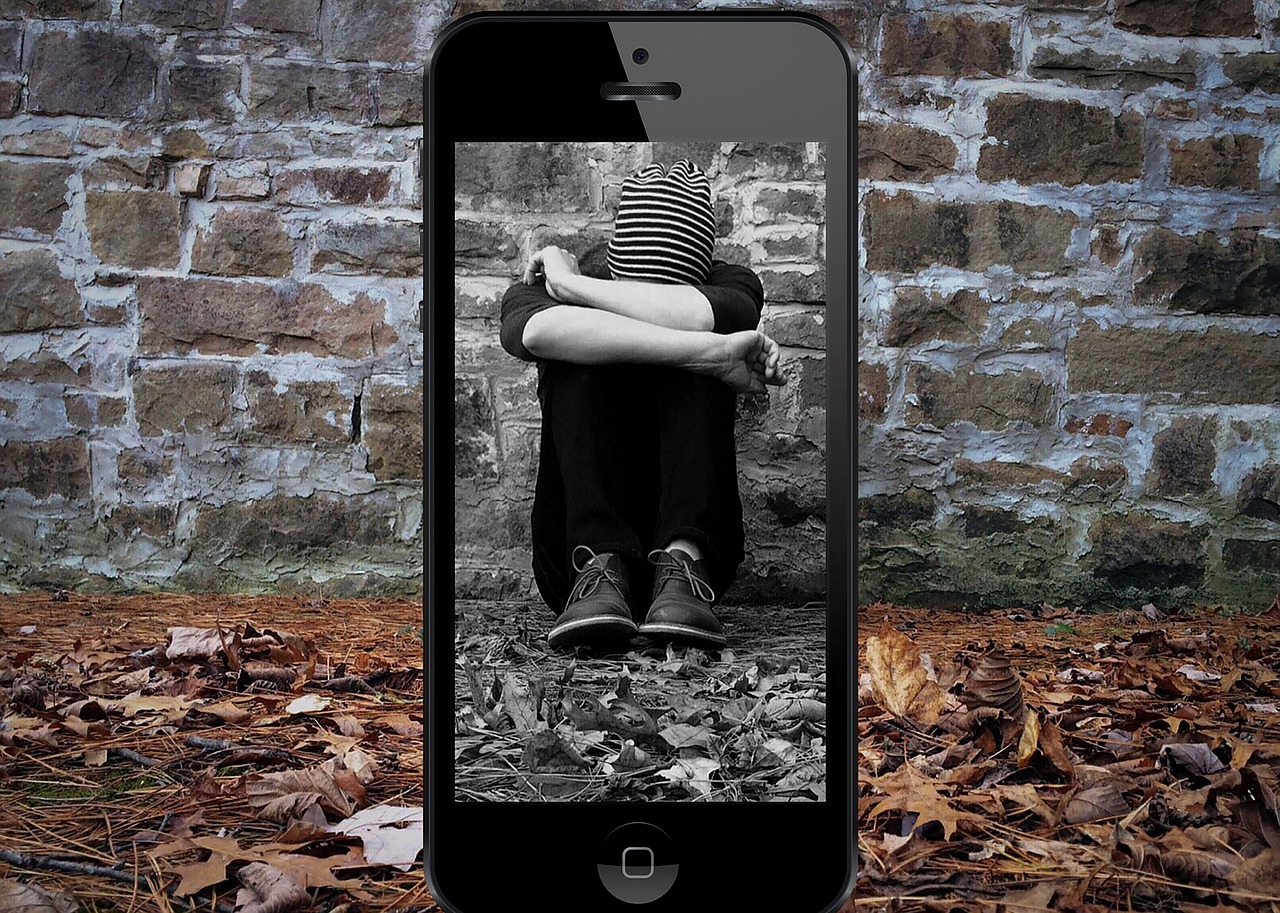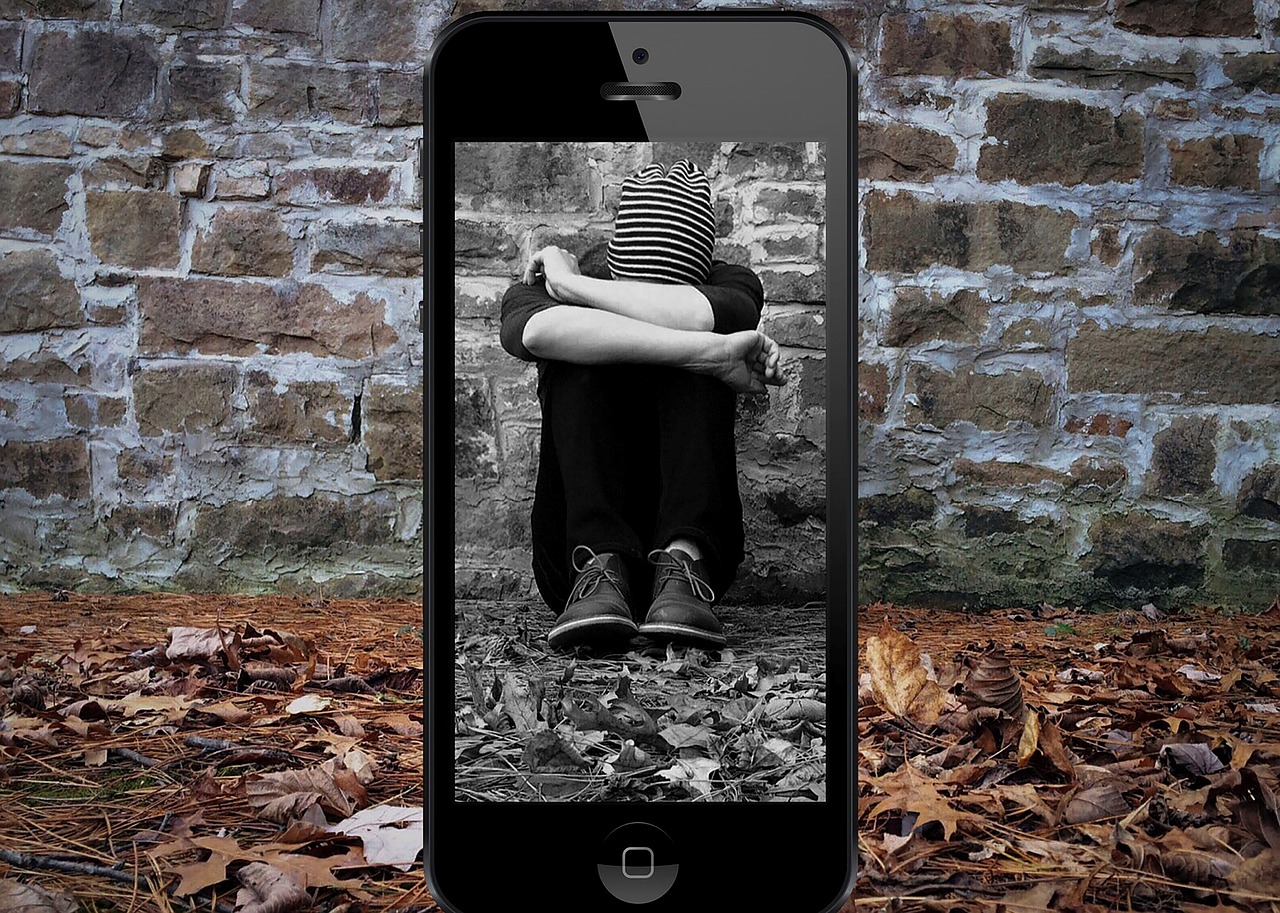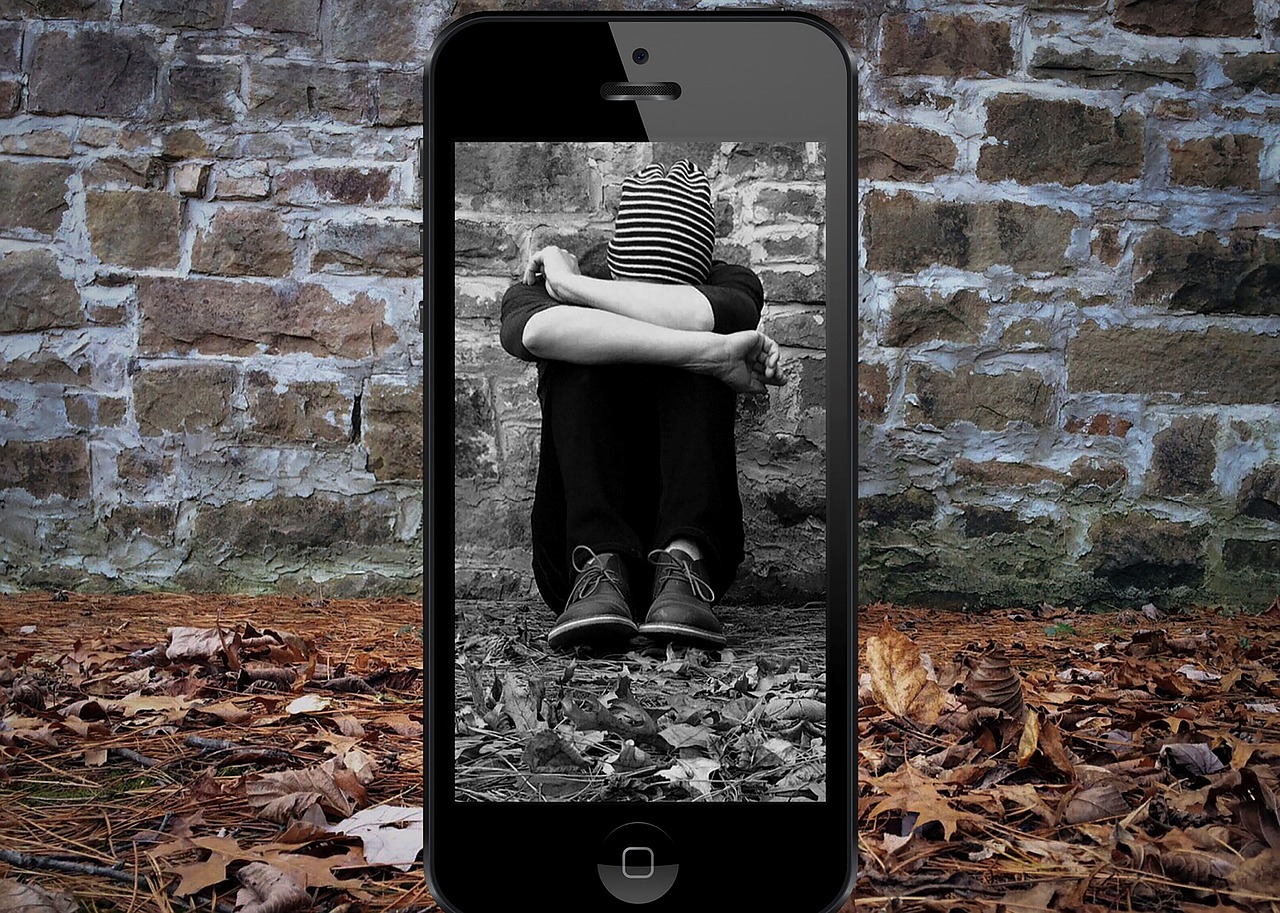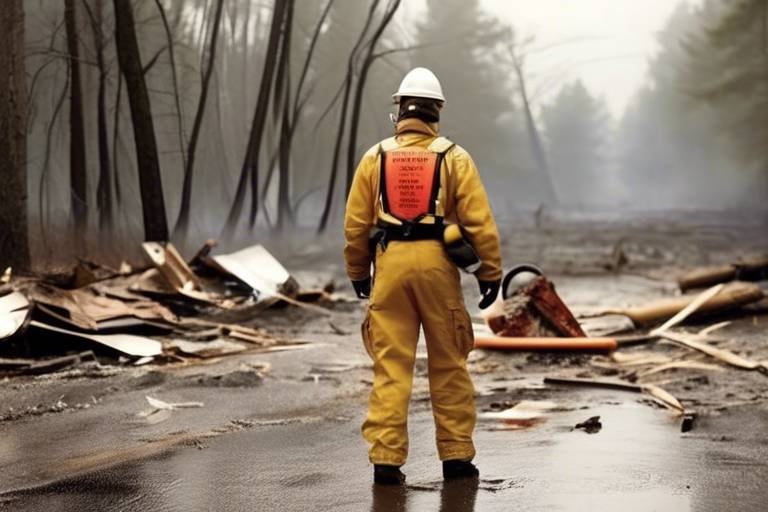Cyberbullying: Modern Threats to Personal Safety
In today's digital age, the internet is not just a tool for connection and communication; it can also be a battleground where personal safety is compromised. Cyberbullying, a term that has gained significant attention in recent years, is a modern threat that affects individuals of all ages, particularly young people. This pervasive issue involves using digital platforms to harass, intimidate, or embarrass someone, often leading to severe emotional and psychological repercussions. With the rise of social media, messaging apps, and online gaming, the avenues for such behavior have expanded, making it crucial for us to understand the dynamics of cyberbullying and its impact on personal safety.
Imagine walking through a crowded room, and suddenly, someone starts to shout hurtful things about you. Now, picture that same scenario, but instead of a physical space, it happens online, where the audience can be vast and anonymous. This is the reality of cyberbullying, where the perpetrator can hide behind a screen, making it easier to inflict harm without facing immediate consequences. Victims often feel trapped, as the harassment can follow them into their homes, affecting their mental health and overall well-being.
To combat this modern menace, we must first acknowledge its existence and understand its various forms. Cyberbullying can manifest in different ways, including:
- Harassment: Repeatedly sending offensive messages or threats.
- Impersonation: Creating fake accounts to damage someone's reputation.
- Exclusion: Intentionally excluding someone from online groups or conversations.
- Outing: Sharing someone's private information without consent.
The psychological effects of cyberbullying can be devastating. Victims may experience a range of emotional responses, from anxiety and depression to feelings of isolation and worthlessness. The impact extends beyond immediate emotional distress; it can affect academic performance, social interactions, and even physical health. Understanding these effects is vital for recognizing the urgency of addressing cyberbullying as a serious issue that threatens individual safety and well-being.
As we navigate through this article, we'll explore common platforms where cyberbullying occurs, the role of social media, and the importance of privacy settings. Additionally, we'll delve into the emotional and social consequences faced by victims, prevention strategies, and the legal implications surrounding cyberbullying. By shedding light on these aspects, we can better equip ourselves and our communities to combat this modern threat effectively.
Below are some common questions regarding cyberbullying and its impact on personal safety:
- What is cyberbullying? Cyberbullying involves using digital platforms to harass or intimidate individuals, often leading to emotional distress.
- Who can be a victim of cyberbullying? Anyone can be a victim, but young people are particularly vulnerable due to their extensive use of social media and online platforms.
- How can I protect myself from cyberbullying? Adjust your privacy settings on social media, be cautious about sharing personal information, and report any abusive behavior.
- What should I do if I am a victim of cyberbullying? Reach out to trusted friends or family, document the incidents, and report them to the platform or authorities if necessary.

Understanding Cyberbullying
Cyberbullying has become a buzzword in our digital age, but what does it really mean? At its core, cyberbullying involves the use of digital platforms to harass, intimidate, or belittle individuals. Unlike traditional bullying, which often occurs face-to-face, cyberbullying can happen anytime and anywhere, making it a pervasive issue that affects people of all ages. Imagine being constantly watched, judged, and criticized by a group of unseen peers; that's the reality for many victims of cyberbullying.
There are several forms of cyberbullying, including:
- Harassment: Sending threatening or abusive messages.
- Impersonation: Creating fake accounts to deceive and harm others.
- Outing: Sharing private information without consent.
- Exclusion: Intentionally excluding someone from online groups or activities.
The psychological effects of cyberbullying can be devastating. Victims often experience feelings of isolation, anxiety, and depression. It's like being trapped in a dark room with no escape; the emotional toll can linger long after the bullying stops. Studies have shown that victims of cyberbullying are more likely to develop issues such as low self-esteem and suicidal thoughts. It’s crucial to understand that the impact of cyberbullying goes beyond the screen; it seeps into the victim's everyday life, affecting their relationships, academic performance, and overall well-being.
As we navigate this complex digital landscape, it's essential to recognize the significance of addressing cyberbullying. By fostering a culture of empathy and respect online, we can create a safer environment for everyone. Remember, every click, every message, and every post carries weight. Understanding cyberbullying is the first step toward combating it effectively.

Common Platforms for Cyberbullying
In today’s digital age, the reach of cyberbullying extends far and wide, infiltrating various online platforms that many of us use daily. These platforms, while designed to foster communication and connection, can also serve as breeding grounds for harassment and intimidation. Understanding where cyberbullying commonly occurs is crucial for both prevention and intervention. Popular social media sites and messaging applications are among the most notorious venues for this troubling behavior.
Social media platforms, such as Facebook, Instagram, and Twitter, enable users to share thoughts, images, and videos with a wide audience. Unfortunately, this openness can also lead to the rapid spread of hurtful comments and rumors. For instance, a single negative post can go viral, reaching countless individuals in a matter of minutes. The public nature of these platforms often exacerbates the situation, making victims feel isolated and exposed.
Moreover, the interactive features of social media, like comments and shares, can amplify negative interactions. Users may find themselves bombarded with derogatory remarks, which can severely impact their mental health. The anonymity that some users feel on these platforms can embolden them to say things they would never dream of uttering in person, creating a toxic environment that can leave lasting scars.
Messaging apps like WhatsApp, Snapchat, and Telegram represent another layer of complexity when it comes to cyberbullying. Unlike social media, these platforms often facilitate private conversations, which can make it easier for bullies to target individuals without the fear of public exposure. This hidden nature of messaging apps can make it challenging for victims to seek help, as the abuse may go unnoticed by others. Furthermore, the ephemeral nature of messages—where they disappear after being viewed—can make it hard for victims to gather evidence of the bullying, complicating any attempts to report the behavior.
| Platform | Common Forms of Cyberbullying |
|---|---|
| Public shaming, spreading rumors, and harassment through comments. | |
| Body shaming, negative comments on posts, and direct messages. | |
| Trolling, hateful tweets, and targeted harassment. | |
| Group bullying, spreading of false information, and private messages. | |
| Snapchat | Sending hurtful images, screenshots of messages, and public humiliation. |
It’s essential for users to remain vigilant and aware of their online presence. Understanding the risks associated with these platforms can empower individuals to take proactive steps to protect themselves. From adjusting privacy settings to being mindful of the interactions they engage in, there are numerous ways to foster a safer online environment. By promoting awareness and open communication, we can work together to combat the pervasive issue of cyberbullying.

The Role of Social Media
Social media has become a double-edged sword in our modern society. On one hand, it serves as a powerful tool for connection, allowing us to share our lives, ideas, and experiences with friends and family across the globe. On the other hand, it has also emerged as a breeding ground for cyberbullying. The very features that make social media engaging can also amplify negative behaviors, creating an environment where bullying can thrive. But how exactly does this happen?
First and foremost, the anonymity that social media provides can embolden users to engage in harmful behaviors they might not otherwise exhibit face-to-face. When someone hides behind a screen, they may feel detached from the consequences of their actions. This detachment can lead to a significant increase in aggressive comments, cruel memes, and targeted harassment. It's like throwing a rock from behind a wall; you can’t see the damage it causes, and that makes it easier to do.
Moreover, the instant nature of social media allows for rapid dissemination of harmful content. A single post or comment can go viral in a matter of minutes, reaching thousands of people. This quick spread can escalate situations quickly, turning a small issue into a full-blown public spectacle. Victims often find themselves in a fishbowl, their pain and suffering on display for everyone to see, which only exacerbates the emotional toll.
Another factor contributing to the prevalence of cyberbullying on social media is the lack of regulation. Many platforms struggle to enforce their community guidelines effectively, leaving users vulnerable to trolls and bullies. While some platforms have made strides in improving their moderation practices, the sheer volume of content makes it challenging to monitor everything. This creates a sense of impunity for those who engage in cyberbullying, as they believe they can act without fear of repercussions.
In addition to these issues, the social validation that accompanies likes and shares can further perpetuate bullying behavior. When a negative comment receives traction, it can encourage the bully to continue their attacks, fueled by the validation they receive from others. It's akin to a mob mentality; the more people join in, the more emboldened the original aggressor becomes.
To combat these challenges, users must be proactive in managing their online presence. Understanding privacy settings is crucial. By making profiles private, users can limit who sees their content and who can interact with them, thereby reducing the risk of becoming a target. Furthermore, users should be educated about the importance of reporting any bullying behavior they encounter. Platforms are beginning to implement features that allow users to block or report bullies, but these tools are only effective if people use them.
In conclusion, while social media can be a wonderful way to connect and share experiences, it also presents significant risks, particularly regarding cyberbullying. By understanding the dynamics at play and taking proactive steps, we can create a safer online environment for everyone. It's essential to foster a culture of empathy and respect, both online and offline, to mitigate the impact of cyberbullying and ensure that social media remains a positive space.

Privacy Settings and Their Importance
In today's digital age, understanding privacy settings is not just a good practice; it’s essential for safeguarding oneself against the lurking dangers of cyberbullying. Imagine walking through a crowded street, and every passerby can see your personal conversations and thoughts. Sounds uncomfortable, right? Well, that's what happens when privacy settings are lax. By adjusting these settings, users can create a protective barrier around their personal information, making it significantly harder for bullies to invade their space.
Privacy settings enable users to control who can see their posts, send them messages, or even view their profiles. For instance, on platforms like Facebook, users can customize their audience for each post. This means you can share a funny video with close friends while keeping it hidden from potential bullies. Similarly, on Instagram, adjusting your account to 'private' ensures that only approved followers can view your content. This simple act can drastically reduce the chances of becoming a target.
Moreover, it’s crucial to regularly review and update these settings. Social media platforms frequently change their policies and features, which can inadvertently expose your information. Just like you wouldn’t leave your front door wide open, you shouldn’t leave your digital door ajar either. Take the time to explore the privacy options available on each platform you use. Here’s a quick checklist of key privacy settings to consider:
- Profile Visibility: Ensure your profile is visible only to friends or approved followers.
- Post Audience: Control who can see your individual posts.
- Message Settings: Limit who can send you messages or friend requests.
- Location Sharing: Disable location tagging in posts to protect your whereabouts.
By taking these proactive steps, you not only protect yourself but also create a safer online environment for others. It’s like building a fence around your yard; it keeps unwanted visitors out while allowing friends to enjoy your space. Remember, the internet can be a beautiful place filled with connections and creativity, but it can also be a breeding ground for negativity if we don’t take the necessary precautions.
In conclusion, privacy settings are your first line of defense against cyberbullying. They empower you to take control of your digital footprint and mitigate risks. So, the next time you log into your social media accounts, take a moment to review your privacy settings. It could make all the difference in protecting your personal safety and enhancing your online experience.
Q1: What are privacy settings?
Privacy settings are features provided by social media platforms that allow users to control who can see their information, posts, and interactions.
Q2: How can I find my privacy settings?
Most social media platforms have privacy settings located in the account settings or security section. Look for options labeled 'Privacy' or 'Account Privacy' to make adjustments.
Q3: Can privacy settings completely prevent cyberbullying?
While privacy settings significantly reduce the risk of cyberbullying, they cannot guarantee complete protection. It's essential to combine them with awareness and reporting mechanisms.

Anonymous Accounts and Their Risks
In the vast digital landscape, the allure of anonymity can be a double-edged sword. On one hand, it allows individuals to express themselves freely without the fear of judgment; on the other, it creates a breeding ground for cyberbullying and harassment. The anonymity provided by various online platforms can embolden users to engage in harmful behaviors that they might avoid in face-to-face interactions. This phenomenon raises crucial questions about accountability and responsibility in the online world.
Anonymous accounts can often be created with little to no verification, making it incredibly easy for individuals to hide their true identities. This lack of accountability can lead to a myriad of risks, including:
- Escalation of Bullying: When bullies know they cannot be easily identified, they may feel empowered to escalate their attacks, leading to more severe forms of harassment.
- Spread of Misinformation: Anonymous users can spread false information or rumors without fear of repercussion, which can have damaging effects on the victim's reputation.
- Difficulty in Reporting: Victims of cyberbullying may find it challenging to report incidents when the perpetrator is anonymous, leading to a feeling of helplessness.
Moreover, the emotional toll on victims of cyberbullying is often magnified when the assailant remains faceless. Victims may experience heightened feelings of isolation and vulnerability, as they grapple with the idea that their aggressor could be anyone—perhaps even someone they know. This uncertainty can lead to a sense of paranoia, making them wary of their online interactions.
Furthermore, the risks associated with anonymous accounts extend beyond individual incidents of bullying. They can contribute to a toxic online environment where harmful behavior is normalized. This culture not only affects the victims but can also desensitize bystanders who witness such actions without taking a stand. As the saying goes, "silence is complicity," and when anonymous accounts proliferate, silence can become the norm.
In conclusion, while anonymous accounts can provide a shield for genuine expression, they also pose significant risks that must be acknowledged. It is crucial for individuals, parents, and platform providers to understand these dangers and take proactive steps to mitigate them. By promoting a culture of accountability and encouraging open dialogue about online behavior, we can work towards creating a safer digital space for everyone.
- What are anonymous accounts? Anonymous accounts are online profiles that do not require users to disclose their real identity, allowing them to interact without revealing personal information.
- How can anonymous accounts facilitate cyberbullying? The lack of accountability associated with anonymous accounts can embolden users to engage in bullying behavior without fear of being identified or facing consequences.
- What can be done to combat cyberbullying from anonymous accounts? Education on responsible online behavior, stricter platform policies, and encouraging users to report abusive behavior can help combat the issue.

Messaging Apps: A Hidden Threat
When we think about cyberbullying, social media platforms often come to mind first. However, messaging apps are increasingly becoming the silent battlegrounds where bullying occurs. These apps, which many of us use daily to connect with friends and family, can also serve as a breeding ground for harmful behavior. The anonymity and privacy that these platforms offer can make it all too easy for bullies to harass their victims without fear of immediate repercussions.
One of the main reasons messaging apps are a hidden threat is that they often allow for private conversations. Unlike public posts on social media, where comments are visible to everyone, messages sent through apps like WhatsApp, Snapchat, or Telegram can be easily hidden. This secrecy provides a shield for bullies, enabling them to engage in harassment without anyone else witnessing their actions. Imagine a dark alley where no one can see what's happening—this is similar to how these private conversations can function.
Moreover, the instant nature of messaging apps can exacerbate the situation. Victims may receive hurtful messages at any time, leading to a constant state of anxiety. The immediacy of these apps means that the bullying can feel relentless, as bullies can strike at any moment, whether during school hours or late at night. This can have a profound impact on the victim's mental health, leading to feelings of isolation and despair.
Another concerning aspect is the use of group chats. These can become particularly toxic environments where a single bully can rally others to join in the harassment. The dynamics of group chats can amplify the bullying, making it feel as though the victim is being attacked by an entire crowd rather than just one person. It's like being cornered in a room full of hostile faces, where escape seems impossible.
To illustrate the prevalence of this issue, consider the following statistics:
| Statistic | Percentage |
|---|---|
| Teens who have experienced cyberbullying via messaging apps | 40% |
| Victims who reported feeling anxious or depressed | 60% |
| Parents unaware of their children being bullied through messaging apps | 70% |
As we navigate the digital landscape, it’s crucial to recognize that messaging apps are not just tools for communication but can also become weapons of harassment. Parents, educators, and individuals must be aware of the potential for bullying on these platforms. Open conversations about the dangers of messaging apps and the importance of reporting any harmful behavior can empower victims and create a supportive environment.
In conclusion, while messaging apps offer us the convenience of instant communication, they also harbor hidden threats that can lead to serious emotional and psychological harm. By understanding these risks, we can take proactive steps to mitigate the dangers and foster a safer online community for everyone.
- What should I do if I witness cyberbullying on a messaging app? - Report the behavior to the platform and encourage the victim to seek help.
- Can I block someone who is bullying me on a messaging app? - Yes, most apps allow you to block users to prevent them from contacting you.
- How can I talk to my child about cyberbullying? - Initiate open conversations about their online experiences and encourage them to share any negative interactions.

Impact on Victims
The effects of cyberbullying can be devastating, leaving a lasting imprint on the lives of those targeted. Imagine waking up every day, not knowing if your phone will buzz with another cruel message or if your social media account will be flooded with hurtful comments. The emotional and psychological toll of such experiences can be overwhelming, manifesting in various ways that affect both mental health and daily functioning.
Victims of cyberbullying often experience a range of emotional responses, including anxiety, depression, and a significant decline in self-esteem. These feelings can be exacerbated by the constant connectivity of the digital world, where the bullying doesn't stop when school ends or when one goes home. Instead, it can follow them everywhere, creating a sense of perpetual distress. The anonymity of the internet can make the attacks feel even more personal and isolating, as victims may feel they have no safe space to retreat to.
In addition to emotional struggles, the impact of cyberbullying can extend to academic and social consequences. Victims may find it challenging to focus on their studies, leading to a decline in academic performance. The stress of being bullied can make it difficult to concentrate, participate in class, or even attend school altogether. Socially, victims may withdraw from friends and family, fearing judgment or further victimization. This isolation can create a vicious cycle, where the lack of support compounds their feelings of loneliness and despair.
| Consequences | Short-Term Effects | Long-Term Effects |
|---|---|---|
| Emotional | Anxiety, sadness | Chronic depression, PTSD |
| Academic | Declining grades | Higher dropout rates |
| Social | Withdrawal from friends | Difficulty forming relationships |
As we can see from the table above, the consequences of cyberbullying are not just fleeting; they can shape an individual's life trajectory. The emotional scars may linger long after the bullying has ceased, affecting their ability to trust others and engage in healthy relationships. Furthermore, the academic struggles can lead to missed opportunities and diminished self-worth, trapping victims in a cycle of negativity that can be hard to break.
Ultimately, the impact of cyberbullying is profound and multifaceted. It is crucial for friends, family, and educators to recognize the signs of someone being bullied online. By fostering open communication and providing support, we can help victims navigate their experiences and work toward healing. The road to recovery may be long, but with the right tools and resources, it is entirely possible for victims to reclaim their lives and find joy once again.
- What is cyberbullying? Cyberbullying is the use of digital platforms to harass, threaten, or intimidate individuals.
- What are the signs of someone being cyberbullied? Signs may include withdrawal from social activities, changes in mood or behavior, and a decline in academic performance.
- How can parents help prevent cyberbullying? Parents can engage in open discussions about online behavior, monitor their children's online activities, and establish trust to encourage reporting of bullying incidents.
- What should a victim do if they are being cyberbullied? Victims should document the bullying, block the harasser, and report the incidents to the platform and trusted adults.

Emotional and Psychological Effects
The impact of cyberbullying on an individual's emotional and psychological well-being can be profound and long-lasting. Victims often find themselves trapped in a cycle of despair, with feelings of isolation and hopelessness becoming a daily reality. It's like being stuck in a dark room with no way out, where every notification on their phone serves as a reminder of the torment they face. The emotional toll can manifest in various ways, including anxiety, depression, and a significant drop in self-esteem.
One of the most alarming effects of cyberbullying is the development of anxiety disorders. Victims may constantly feel on edge, worrying about when the next attack will occur. This heightened state of alertness can lead to panic attacks, where the individual feels overwhelmed and unable to cope with their emotions. In many cases, this anxiety can spill over into their daily lives, affecting their ability to concentrate at school or work, and even leading to physical symptoms like headaches and stomach issues.
Moreover, the psychological scars left by cyberbullying can lead to depression, a condition that can severely affect one’s quality of life. Victims may withdraw from friends and family, feeling that no one understands their pain. This withdrawal can create a vicious cycle, as the lack of social support can exacerbate feelings of loneliness and despair. In extreme cases, these feelings can lead to suicidal thoughts or actions, making it crucial for friends, family, and educators to recognize the signs of distress.
Low self-esteem is another common consequence of being targeted online. Victims often internalize the hurtful messages and comments, believing that they are unworthy or undeserving of love and respect. This negative self-image can hinder their ability to form healthy relationships, both online and offline. It’s essential to understand that the effects of cyberbullying are not just temporary; they can linger for years, affecting personal and professional relationships long after the bullying has stopped.
To illustrate the emotional effects further, consider the following table that outlines common psychological consequences of cyberbullying:
| Emotional Effect | Description |
|---|---|
| Anxiety | Constant worry and fear about future bullying incidents. |
| Depression | Feelings of sadness, hopelessness, and withdrawal from social interactions. |
| Low Self-Esteem | Negative self-image and feelings of unworthiness. |
| Social Isolation | Withdrawal from friends and activities, leading to loneliness. |
In summary, the emotional and psychological effects of cyberbullying are serious and far-reaching. Victims often face a tumultuous journey filled with anxiety, depression, and self-doubt. It's imperative for those around them to provide support and understanding, creating an environment where victims feel safe to share their experiences and seek help. Awareness and open communication can be the first steps in combating the devastating effects of cyberbullying.
- What should I do if I am being cyberbullied? If you are experiencing cyberbullying, it's important to reach out to someone you trust, whether it's a friend, family member, or teacher. Document the incidents and report them to the platform or authorities.
- How can I help a friend who is being cyberbullied? Offer your support and listen to them without judgment. Encourage them to speak up and seek help from trusted adults.
- Are there legal consequences for cyberbullying? Yes, cyberbullying can lead to legal action depending on the severity and local laws. It’s essential to understand your rights and the available protections.

Academic and Social Consequences
Cyberbullying can wreak havoc on a victim's life, extending its reach far beyond the screen and into the realms of academics and social interactions. Imagine a student who, once full of enthusiasm for learning, now dreads going to school because of relentless online harassment. This is the harsh reality for many victims of cyberbullying, who often find their academic performance slipping as a direct result of their emotional turmoil. The constant anxiety and stress can lead to difficulties in concentration, which significantly impacts their ability to perform well in school.
In a study conducted by the Cyberbullying Research Center, it was found that students who experience cyberbullying are more likely to report lower grades and a lack of interest in school activities. This can create a vicious cycle: as their grades drop, their self-esteem takes a hit, leading to further isolation and depression. Consequently, victims may withdraw from class participation, skip school altogether, or even drop out, fearing the judgment and ridicule that await them.
Socially, the repercussions of cyberbullying can be just as devastating. Victims often find themselves ostracized from their peer groups, leading to feelings of loneliness and despair. The very essence of social interaction—trust and companionship—becomes tainted by the fear of being targeted again. Many victims report that they struggle to form new friendships or maintain existing ones, as they constantly worry about being judged or bullied. This isolation can lead to a range of emotional issues, including depression and anxiety, which further complicate their social lives.
To illustrate the academic and social impact of cyberbullying, consider the following table:
| Consequences | Academic Impact | Social Impact |
|---|---|---|
| Declining Grades | Lower test scores and assignments | Loss of peer relationships |
| Increased Absenteeism | Frequent school skipping | Isolation from social circles |
| Loss of Interest | Apathy towards schoolwork | Difficulty in making new friends |
In summary, the academic and social consequences of cyberbullying are profound and far-reaching. Victims not only face challenges in their studies but also struggle to navigate the complex world of social interactions. It’s crucial for educators, parents, and peers to be aware of these impacts and work collaboratively to create a supportive environment that fosters resilience and healing for those affected by cyberbullying.
- What is cyberbullying? Cyberbullying is the use of digital platforms to harass, threaten, or intimidate individuals, often leading to severe emotional distress.
- How can I recognize if someone is being cyberbullied? Signs include sudden changes in behavior, withdrawal from social activities, declining academic performance, and unexplained emotional distress.
- What should I do if I witness cyberbullying? It’s important to report the behavior to a trusted adult, school authority, or the platform where the bullying is occurring. Support the victim by offering your friendship and understanding.
- Are there legal consequences for cyberbullying? Yes, many jurisdictions have laws regarding cyberbullying that can lead to legal action against the perpetrators.

Prevention and Intervention Strategies
Preventing cyberbullying is not a task that can be tackled by one individual alone; it requires a collective effort from parents, schools, and the community at large. By understanding the dynamics of cyberbullying and implementing effective strategies, we can create a safer online environment for everyone. First and foremost, education is key. Parents should engage in open conversations with their children about the potential dangers of the internet and the importance of treating others with respect, both online and offline. This dialogue can help children feel comfortable discussing their online experiences, making it easier for them to report any incidents of bullying they may encounter.
Moreover, schools play a vital role in combating cyberbullying. Implementing comprehensive anti-bullying programs can significantly reduce incidents. These programs should include workshops that educate students about the implications of cyberbullying, promote empathy, and encourage positive online behavior. Schools might also consider integrating the topic into their existing curriculum, ensuring that every student understands the consequences of their actions in the digital world. Additionally, creating a supportive environment where students feel safe to report bullying is crucial. This can be achieved by establishing clear policies and procedures for reporting incidents, ensuring that students know they will be taken seriously and that appropriate actions will be taken.
Another effective strategy involves leveraging technology itself to combat cyberbullying. Many platforms offer tools that allow users to block or report abusive behavior. Educating users on how to utilize these features can empower them to take control of their online experiences. For instance, social media platforms often have reporting mechanisms that can alert moderators to inappropriate content. Schools and parents should encourage young users to familiarize themselves with these tools and use them proactively.
Furthermore, it’s essential to foster a culture of kindness and support in both online and offline spaces. Initiatives that promote positive interactions can help shift the focus away from negative behaviors. For example, schools can organize campaigns that celebrate acts of kindness or create peer support groups that encourage students to stand up against bullying. These efforts not only help victims feel supported but also inspire bystanders to take action when they witness bullying.
In summary, the prevention and intervention of cyberbullying require a multifaceted approach that includes education, open communication, and the use of technology. By working together, we can create a safer and more inclusive digital landscape for everyone.
- What should I do if I witness cyberbullying? If you see someone being bullied online, it's important to report it to the platform and offer support to the victim. Encourage them to speak to a trusted adult.
- How can parents monitor their child's online activity? Parents can use parental control software, but it's also crucial to foster an environment of trust where children feel comfortable sharing their online experiences.
- Are there legal consequences for cyberbullying? Yes, many jurisdictions have laws against cyberbullying, and perpetrators can face serious legal repercussions.
- How can schools effectively address cyberbullying? Schools can implement anti-bullying policies, conduct workshops, and create a supportive environment for students to report incidents.

Educating Parents and Guardians
In the digital age, where our children are constantly connected to the online world, about the risks of cyberbullying is more crucial than ever. Many parents may not fully understand the implications of their child’s online interactions, and this lack of awareness can leave children vulnerable to harassment. It's essential for parents to engage in open dialogues with their kids about their online experiences and to foster an environment where children feel comfortable sharing their concerns.
One effective way to approach this education is through workshops and seminars that focus on the signs of cyberbullying and the tools available to combat it. These sessions can provide parents with the knowledge they need to recognize behavioral changes in their children, which may indicate they are victims or perpetrators of cyberbullying. For instance, parents should look out for signs such as:
- Sudden withdrawal from social activities
- Changes in mood or behavior
- Increased secrecy about online activities
Moreover, parents should be encouraged to set clear rules regarding internet usage. This includes establishing boundaries on the types of sites children can visit and the amount of time they can spend online. By doing so, parents can help mitigate risks associated with cyberbullying. Additionally, it’s vital for parents to familiarize themselves with the various social media platforms and messaging apps their children use. Understanding these tools can help parents monitor interactions and provide guidance on responsible online behavior.
Another key aspect is promoting digital literacy among children. Parents should teach their kids about the importance of privacy settings and how to use them effectively. By ensuring that their profiles are private, children can limit who can see their posts and interact with them, significantly reducing the risk of cyberbullying. Furthermore, parents can encourage their children to think critically about the content they share online and the potential consequences of their digital footprints.
Ultimately, open communication is the cornerstone of preventing cyberbullying. Parents should strive to create a safe space where their children feel empowered to discuss any online issues without fear of judgment. This can be achieved through regular check-ins, encouraging children to share their online experiences, and reassuring them that they can always come to their parents for help. By fostering a strong relationship built on trust, parents can significantly contribute to their child's emotional well-being and resilience against cyberbullying.
1. What should I do if I suspect my child is being cyberbullied?
If you suspect your child is being cyberbullied, start by having an open conversation with them. Ask them about their online experiences and listen without judgment. Encourage them to share any specific incidents and reassure them that they can seek your help. Document any evidence of cyberbullying, such as screenshots or messages, and report the behavior to the appropriate platform or authorities.
2. How can I monitor my child's online activity without invading their privacy?
Finding a balance between monitoring and respecting your child's privacy can be challenging. Consider using parental control tools that allow you to set limits on internet usage and monitor activity without being overly intrusive. Additionally, maintain an ongoing dialogue with your child about their online activities, emphasizing the importance of safety over secrecy.
3. Are there specific signs that indicate my child might be a perpetrator of cyberbullying?
Yes, there are several signs that may indicate your child is engaging in cyberbullying behavior, such as becoming increasingly secretive about their online activities, showing a lack of empathy towards others, or exhibiting aggressive behavior. If you notice these signs, it’s important to address the issue directly and discuss the impact of their actions on others.
4. What resources are available for parents to learn more about cyberbullying?
There are many resources available, including websites, books, and community workshops focused on cyberbullying prevention. Organizations like StopBullying.gov and the National Bullying Prevention Center offer valuable information and tools for parents to educate themselves and their children about online safety.

School Programs and Policies
Schools are at the forefront of combating cyberbullying, and they can play a pivotal role in creating a safe and supportive environment for students. Implementing effective programs and policies is essential for addressing this modern challenge. A comprehensive approach involves not just reactive measures, but proactive strategies that educate students about the implications of their online behavior.
One of the key components to consider is the integration of cyberbullying awareness programs into the school curriculum. These programs can include workshops, assemblies, and classroom discussions that focus on the impact of cyberbullying, how to identify it, and the importance of empathy and respect in online interactions. By fostering an environment where students feel safe to express their concerns, schools can significantly reduce the incidence of cyberbullying.
Moreover, schools should establish clear anti-bullying policies that explicitly include cyberbullying. These policies must outline the consequences for engaging in such behavior, ensuring that students understand the seriousness of their actions. Regularly reviewing and updating these policies is crucial to adapt to the ever-evolving nature of technology and social media. Schools can also provide resources for reporting incidents anonymously, which can encourage students to come forward without fear of retaliation.
To further enhance these initiatives, schools can collaborate with parents and the community. Parent workshops can educate guardians on the signs of cyberbullying and how to communicate effectively with their children about online safety. This partnership creates a united front against bullying, reinforcing the message that it is unacceptable in any form.
In addition, schools can utilize technology to their advantage. Implementing monitoring software can help identify harmful online behavior among students. However, it is essential to balance this with respect for privacy and to ensure that such measures are communicated clearly to students and parents alike. This transparency helps build trust and encourages students to engage in open conversations about their online experiences.
Finally, schools should consider establishing a peer support system. Training students to become "bystander allies" can empower them to intervene when they witness cyberbullying. This not only helps the victims but also fosters a culture of accountability and support within the student body. By creating an environment where students look out for one another, schools can significantly reduce the prevalence of cyberbullying.
In conclusion, by implementing comprehensive programs and policies that involve education, community engagement, and proactive measures, schools can create a safer space for students to thrive. The fight against cyberbullying is a collective effort, and with the right strategies in place, we can cultivate a generation that champions kindness and respect in both the physical and digital worlds.
- What is cyberbullying? Cyberbullying is the use of digital platforms to harass, threaten, or intimidate individuals, often through social media, messaging apps, or online forums.
- How can schools prevent cyberbullying? Schools can prevent cyberbullying by implementing awareness programs, establishing clear anti-bullying policies, and fostering open communication between students, parents, and educators.
- What should a student do if they are being cyberbullied? Victims of cyberbullying should report the incidents to a trusted adult, document the harassment, and utilize any available reporting tools on the platforms where the bullying occurs.
- Are there legal consequences for cyberbullying? Yes, many jurisdictions have laws regarding cyberbullying, and perpetrators can face legal repercussions depending on the severity of their actions.

Legal Implications of Cyberbullying
Cyberbullying is not just a social issue; it has serious legal implications that can affect both the perpetrators and the victims. With the rise of digital communication, many jurisdictions have begun to recognize the need for laws that specifically address the harmful effects of online bullying. Understanding these laws is crucial for anyone involved in a cyberbullying incident, whether as a victim seeking justice or as a perpetrator facing potential consequences.
Different regions have varying laws regarding cyberbullying, reflecting a patchwork of legal frameworks. For instance, some states in the U.S. have enacted specific anti-cyberbullying laws that define what constitutes cyberbullying and outline the penalties for offenders. These laws often include provisions for schools to take action against bullying that occurs on school property or through school-related activities, even if it happens online.
Here are some key aspects of cyberbullying laws:
- Definition: Laws typically define cyberbullying as the use of electronic devices to harass, threaten, or embarrass another individual.
- Penalties: Depending on the severity of the offense, penalties can range from fines to criminal charges, including misdemeanors or felonies.
- School Policies: Many laws require schools to develop policies for addressing cyberbullying, which may include educational programs for students and training for staff.
In addition to state laws, federal laws such as the Children's Internet Protection Act (CIPA) and the Protecting Children in the 21st Century Act address online safety and may indirectly relate to cyberbullying by promoting safer online environments for minors.
It's also essential for victims to know their rights and the steps they can take to report cyberbullying incidents. Reporting can often be done through school officials, local law enforcement, or directly to the platform where the bullying occurred. Here’s a brief overview of the reporting process:
| Step | Description |
|---|---|
| 1 | Document the Evidence: Take screenshots and save messages to have a record of the bullying. |
| 2 | Report to the Platform: Use the reporting features available on social media or messaging apps. |
| 3 | Notify School or Authorities: Inform school officials or local law enforcement about the incident. |
| 4 | Seek Support: Talk to friends, family, or professionals who can help you cope with the situation. |
Ultimately, the legal implications of cyberbullying serve to protect victims and hold offenders accountable. As society continues to navigate the complexities of online interactions, it is vital for individuals to be aware of their rights and the resources available to them. Whether through legal action or educational initiatives, addressing cyberbullying requires a collective effort to foster a safer online environment.
Q: What should I do if I am a victim of cyberbullying?
A: Document all instances of bullying, report it to the platform, inform school officials or law enforcement, and seek support from friends or professionals.
Q: Are there specific laws against cyberbullying?
A: Yes, many states have enacted laws that define and penalize cyberbullying, while federal laws promote online safety for children.
Q: Can I press charges against someone for cyberbullying?
A: Depending on the severity of the behavior and local laws, it may be possible to press charges. Consult with legal authorities for guidance.
Q: What role do schools play in preventing cyberbullying?
A: Schools are often required to develop policies to address cyberbullying, including educational programs and reporting mechanisms for students.

Understanding Cyberbullying Laws
When it comes to cyberbullying, the legal landscape can be as complex as the digital world itself. Different jurisdictions have enacted various laws to tackle this modern menace, but the effectiveness and enforcement of these laws can vary significantly. Understanding these laws is crucial not only for victims seeking justice but also for perpetrators who may not realize the potential legal consequences of their actions.
In many places, laws surrounding cyberbullying are still evolving. Some states have specific anti-bullying laws that include provisions for online harassment, while others may rely on existing laws related to harassment, defamation, or stalking. For instance, in the United States, several states have passed laws that specifically address bullying in schools, which often encompass cyberbullying. These laws typically outline the responsibilities of schools to investigate and respond to incidents of bullying that occur both on and off campus.
Here's a brief overview of common legal frameworks that relate to cyberbullying:
| Jurisdiction | Key Laws | Notes |
|---|---|---|
| USA | State-specific anti-bullying laws | Varies by state; some include online harassment |
| UK | Malicious Communications Act | Addresses sending harmful messages online |
| Australia | Cyberbullying laws under the Enhancing Online Safety Act | Focuses on protecting children from online harassment |
Moreover, many social media platforms have their own policies and reporting mechanisms to handle incidents of cyberbullying. These platforms often take a proactive approach by implementing community guidelines that prohibit harassment and provide users with tools to report abusive behavior. However, it's important to note that reporting to the platform does not replace the need to report to legal authorities if the situation escalates.
For victims of cyberbullying, knowing how to navigate these laws can be empowering. Here are some essential steps they can take:
- Document the incidents: Keep records of all messages, posts, and interactions that constitute bullying.
- Understand your rights: Familiarize yourself with local laws regarding online harassment.
- Report to authorities: If necessary, file a report with law enforcement, especially if threats are involved.
- Seek support: Reach out to organizations that specialize in helping victims of cyberbullying.
As laws continue to evolve, it’s vital for individuals, parents, and educators to stay informed about their rights and responsibilities. Understanding the legal implications of cyberbullying not only helps victims seek justice but also serves as a deterrent for potential offenders. The more we educate ourselves about these laws, the stronger our collective response can be against this pervasive issue.
Q: What should I do if I'm a victim of cyberbullying?
A: Document all incidents, report them to the platform, and consider reaching out to local authorities if the situation escalates.
Q: Are there laws specifically against cyberbullying?
A: Yes, many jurisdictions have specific laws addressing cyberbullying, but these laws vary widely.
Q: Can I report cyberbullying to the police?
A: Yes, if the cyberbullying includes threats or harassment, it is advisable to report it to law enforcement.
Q: What role do social media platforms play in combating cyberbullying?
A: Social media platforms have their own policies against harassment and provide users with tools to report abusive behavior.

Reporting Cyberbullying Incidents
When it comes to cyberbullying, knowing how to report incidents is crucial for victims seeking help and support. The digital world can sometimes feel like a wild west of anonymity and aggression, making it essential for individuals to understand the steps they can take to protect themselves and others. Reporting cyberbullying is not just about seeking justice; it’s about reclaiming your sense of safety and well-being.
First and foremost, victims should document every incident of cyberbullying. This means saving screenshots of offensive messages, posts, or any other relevant content. Having a record is invaluable when it comes to reporting to authorities or platforms. It’s like having a map in a dark forest; it helps guide you through the process and ensures that nothing gets lost in translation.
Once documentation is in place, the next step is to report the incident to the platform where the bullying occurred. Most social media sites and messaging apps have built-in reporting features. For instance, on platforms like Facebook or Instagram, users can report abusive content directly through the post or message options. Here’s a quick breakdown of how to report on some popular platforms:
| Platform | Reporting Method |
|---|---|
| Click on the three dots on the post or message, select "Report," and follow the prompts. | |
| Tap on the three dots above the post or message, choose "Report," and provide the necessary details. | |
| Click on the down arrow on the tweet, select "Report Tweet," and follow the instructions. | |
| Snapchat | Press and hold on the username, select "Report," and follow the prompts. |
In addition to reporting to the platform, victims should consider informing a trusted adult, such as a parent, teacher, or school counselor. Having someone in your corner can make a world of difference. They can provide emotional support and help navigate the reporting process. Remember, you’re not alone in this fight.
If the cyberbullying escalates or involves threats of violence, it’s critical to involve law enforcement. Many jurisdictions have laws protecting individuals from cyberbullying, and law enforcement can take appropriate action to ensure safety. It’s essential to understand that reporting is not just about stopping the behavior; it’s about creating a safer environment for everyone.
In summary, reporting cyberbullying incidents involves documenting the behavior, utilizing platform reporting tools, seeking support from trusted adults, and, if necessary, involving law enforcement. Each step is vital in addressing this modern menace. Remember, taking action is a sign of strength, not weakness. It’s about standing up for yourself and others who may be suffering in silence.
- What should I do if I witness cyberbullying? - If you see someone being bullied online, it’s important to support the victim. You can report the incident to the platform and encourage the victim to document the behavior.
- Can I report cyberbullying anonymously? - Yes, many platforms allow you to report incidents without revealing your identity. However, providing your information can sometimes help in investigations.
- What if the bullying continues after I report it? - If the behavior persists, keep documenting the incidents and consider escalating the issue to law enforcement or seeking legal advice.
Frequently Asked Questions
- What is cyberbullying?
Cyberbullying is the use of digital platforms to harass, intimidate, or harm individuals. It can take many forms, including sending threatening messages, spreading rumors online, or posting hurtful comments on social media.
- What are the common platforms where cyberbullying occurs?
Cyberbullying often occurs on social media platforms like Facebook, Instagram, and Twitter, as well as messaging apps such as Snapchat and WhatsApp. These platforms can create an environment where bullying can thrive due to their interactive nature.
- How can I protect myself from cyberbullying?
To protect yourself, it’s essential to adjust your privacy settings on social media accounts, be cautious about who you share personal information with, and block or report any abusive users. Open communication with trusted friends or family can also provide support.
- What are the emotional effects of being a victim of cyberbullying?
Victims of cyberbullying may experience a range of emotional effects, including anxiety, depression, and low self-esteem. These feelings can lead to serious long-term consequences if not addressed appropriately.
- Can cyberbullying affect my academic performance?
Absolutely! Victims may find it difficult to concentrate in school, leading to declining grades and academic performance. The social isolation that often accompanies cyberbullying can also hinder participation in school activities.
- What should parents do to help prevent cyberbullying?
Parents can play a significant role by educating themselves about the online world, maintaining open lines of communication with their children, and encouraging them to speak up about any bullying incidents they experience or witness.
- Are there laws against cyberbullying?
Yes, many jurisdictions have implemented laws to address cyberbullying. These laws vary by location but generally provide guidelines for reporting incidents and outline the responsibilities of both individuals and online platforms.
- How can I report cyberbullying incidents?
To report cyberbullying, you can use the reporting features provided by social media platforms or messaging apps. Additionally, you may want to inform a trusted adult or contact local authorities if the situation escalates.



















